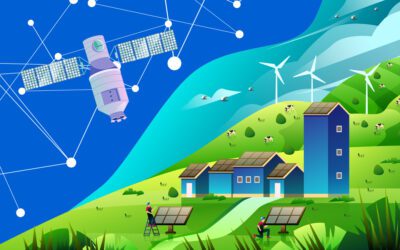We often hear about Continuous Improvement: this concept has spread widely in the companies, becoming a philosophy of being, an improvement that goes beyond the mere appearances of an avant-garde companies, and arising from a profound need of pure evolution.
Continuous improvement is an approach, a way of being: both mental and practical, that encourages constant innovation, efficiency, and quality; an enhancement of processes and methods to make every system more functional and valuable. Thanks to this kind of method, products and services improve in terms of quality: reducing errors, optimizing costs, and placing greater care and attention on creating value and real benefit for the customer and the ecosystem.
The scientific and developmental activities related to renewable energy monitoring systems are based on this important principle, a methodological approach aimed at continuously identifying areas for improvement and implementing incremental changes to optimize the efficiency, reliability, and performance of such systems.
Continuous improvement in renewable energy
In the context of renewable energy monitoring systems, such as those used for solar, wind, or hydroelectric energy, continuous improvement can encompass several aspects:
- Sensing technologies: the latest technologies and sensors used to measure key variables in renewable energy sources are more reliable, striving for the highest quality of collected data. This contributes to more accurate predictions and optimized plant performance.
- Data processing: Enhancing data processing methods, including advanced statistical analysis and the application of sophisticated artificial intelligence algorithms, leads to the extraction of more meaningful insights. This aids in understanding system performance and identifying potential anomalies or inefficiencies. Sometimes, combining different techniques is necessary to achieve more accurate results.
- Forecasting and optimization: implementing advanced prediction models based on historical and current data can improve the ability to forecast future energy production from renewable sources. These predictions enable a better balance between energy production and consumption, facilitating the stable integration of renewable energies into the electrical grid.
- Predictive maintenance: by utilizing real-time data and advanced analysis, predictive maintenance systems can be developed to identify potential issues in the production plant. This reduces downtime and enhances overall efficiency.
- User-friendly dashboards: an intuitive interface is crucial to simplify and enhance the usability of renewable energy monitoring systems. With a well-designed dashboard, any operator can easily monitor the plant’s performance.
- Sustainability: continuous improvement can also extend to sustainability aspects, such as optimizing the materials used for sensors and components and reducing the energy consumption of monitoring systems themselves.
A practical example in i-EM’s job
An illustrative example of these improvement implementations applied to developed products, as mentioned earlier, will be presented in September in Lisbon during the EU PVSEC event. An expert data scientist from i-EM will explain the evolution of last year’s research concerning zonal photovoltaic production forecasting. The expert will describe the results achieved using the new deep learning sequence-to-sequence system capable of predicting power production up to the next four hours in 15-minute intervals, applied to the ‘Sicily’ market area.
The model analyses real-time data related to:
- Aggregate production from photovoltaic installations by the Transmission System Operator (TSO)
- Photovoltaic production forecasts from previous market sessions
- Satellite observations per province, weighted by the corresponding province’s photovoltaic capacity.
- Numerical weather prediction (NWP) data acquired per province, also weighted by the corresponding province’s photovoltaic capacity.
i-EM has developed this model to assist distribution and transmission system operators, providing increasingly accurate predictions of generation from non-programmable sources like photovoltaics.

In conclusion
This is just one example of how continuous improvement is essential in the business context, to ensure that renewable energy monitoring systems are always at the forefront in terms of technologies and solutions, in order to maximize the efficiency and effectiveness of renewable energy sources. Scientific research plays a pivotal role in this process, as it is through discovery, innovation, and pure evolution that new milestones can be achieved.






